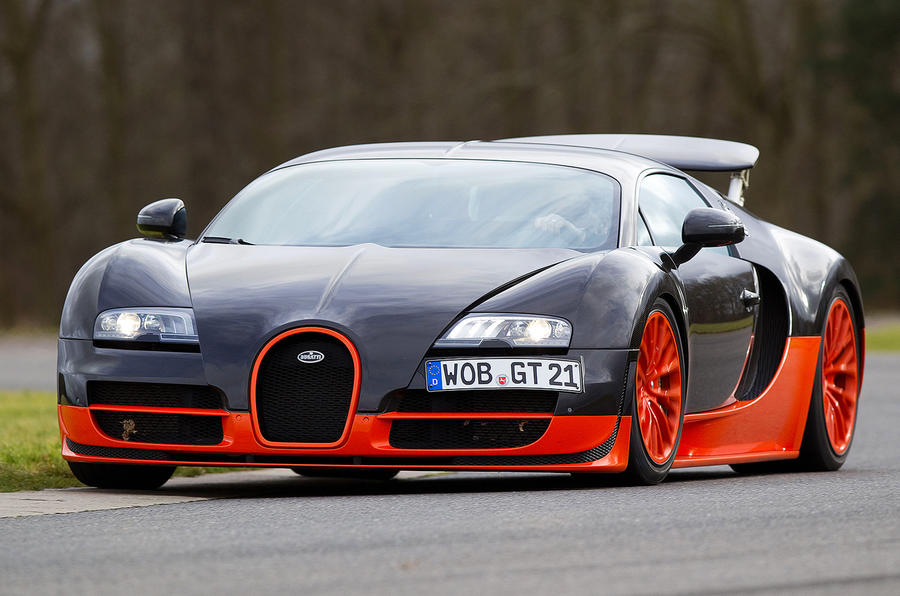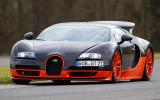You're in a car, throttle wide open and at top speed, and you're covering more than one football pitch a second. That's how fast 300mph is. It's so staggeringly fast, in fact, that by the time you've finished reading this sentence you'll have travelled almost another half a mile.
The engineering challenges at these kind of speeds are phenomenal. You need to keep the car on the ground, enable it to follow a desired course, stop its powertrain from turning into a cloud of expensive shrapnel and – ultimately – have it produce enough power to reach, let alone exceed, 300mph.
The announcement of a new 286mph-capable Bugatti Veyron, however, suggests that the world's first 300mph-capable production car is years, rather than decades, away. Could a Super Sport version, with more power and a other upgrades, attain the necessary additional 14mph?
The Veyron's successor Bugatti Chiron has been unveiled at the Geneva Motorshow
Obviously we're deep into the realm of diminishing returns here, but the numbers bear some consideration. The original Veyron produced 987bhp and hit 253.81mph; the Supersport improved on that with 1184bhp and 267.86mph.
So, an extra 197bhp added 13.87mph on to the top end of the original Veyron. Repeating a similar 14mph-odd gain with a new Super Sport would require even more power, due to the higher speeds involved, but even so – after a quick bit of bistromathematics – I reckon another 250bhp would do it.
Obviously there will be many hurdles to overcome in producing a second-generation 1725bhp Veyron Super Sport, tyres not withstanding. Turbocharged engines can usually be provoked into producing more power, and the Veyron has cylinder and turbocharger counts in its favour, so it's unlikely that sheer output will be the limiting factor – although the Bugatti may have concerns about reliability, especially on conventional fuel, or driveability.
Aerodynamics shouldn't be too much of an issue however, considering the engineering might behind Bugatti and the speeds it has already achieved. People have already managed to push stock-bodied cars over 300mph mark, so it can be done. For example, in 1999, the Kugel & LeFevers Pontiac Firebird hit 307.468mph on the Bonneville salt flats.












Join the debate
Add your comment
I have no concept...
Why??
Etravagant engineering
The second route is add more power and push the car tech ahead thus becoming the first to overcome two engineering challenges - a) 300mph top speed b) 2-sec 0-62mph. Veyron is an extravagant feat of engineering. Bugatti should stick with the formula. Those few who can afford Veyron don't really worry over fuel costs or environment.